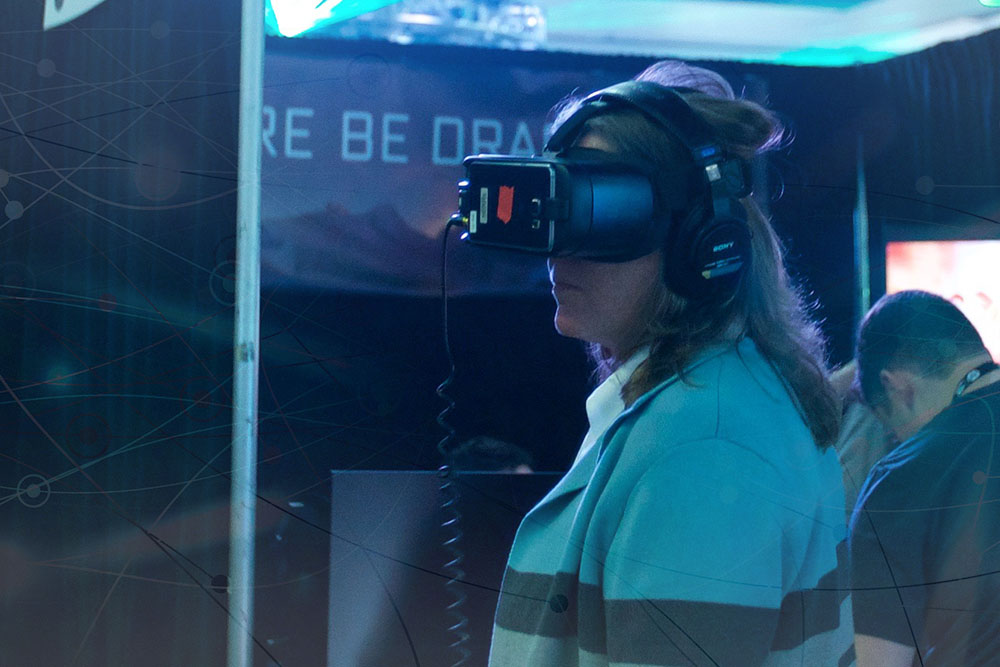This week in marketing news, virtual reality is more of a household name, internet advertising spend will reach new highs, and while consumers prefer to research online, they don’t always want to purchase that way.
Video Gets Social
When it comes to apps, consumers sure love to watch videos on social media, and don’t seem to mind marketing videos. Sixty-four percent of consumers made a purchase after watching a marketing video on Facebook in the last month, according to findings by Animoto. Four percent of consumers reported watching social video content on mobile devices and 81 percent of marketers reported optimizing social videos for mobile including using tactics like planning for views with the sound off.
Vertical video is the preferred among mobile users, according to Yume, who found that 79 percent of first-time vertical-video viewers seeing the format as a more engaging content experience. In addition, 85 percent of both new and experienced viewers appreciate it as an option.
Speaking of vertical viewing, Snapchat’s most successful series, E!’s The Rundown, averages more than seven million viewers per weekly episode, according to the company. That’s about half of what the number one show brings in— CBS’ The Big Bang Theory—which averaged 14.03 million viewers per episode, according to calculations by CNBC.
Virtual Awareness
While not everyone has hopped on board the VR train, awareness for AR and VR devices nearly doubled year-over-year, according to Nielsen. Fifty-one percent of the general US population is aware of such devices, compared to just 28 percent in 2016. Intent to buy AR/VR skews more male (69 percent) and younger, with 44 percent of interested consumers being millennials.
In the first quarter, more than two million AR/VR headsets were shipped globally, according to new data from IDC. VR is still the most popular immersive headset, with 98 percent of shipments. Smaller brands comprised 43 percent of the market and 22 percent of devices shipped were from Samsung, followed by Sony (19 percent) and HTC (eight percent).
Tolerating Ads
According to Kantar Media, 68 percent of connected consumers either tolerate or like advertising, and 36 percent think advertising is changing for the better. On mobile, 35 percent of those surveyed said they would be willing to provide more data to brands in return for more relevant ads.
Internet advertising revenue in the US reached $72.5 billion in 2016, the largest market in the world, PwC reported. This figure is forecast to reach $116.2 billion in 2021, rising at a CAGR of 9.9 percent. Global entertainment and media revenues are expected to rise from $1.8 trillion in 2016 to $2.2 trillion in 2021, the firm predicts.
Research-Versus-Shopping
While 62 percent of consumers prefer to research electronics and computers online, only 43 percent are comfortable making that purchase online as well, according to an infographic released by Chargebacks911. Thirty percent of shoppers did all or most of their shopping for household appliances online, the company found, but 53 percent preferred to research online before purchasing.
Is Esports An Actual Sport?
Earlier this month, esports company ESL announced a partnership with Facebook to stream exclusive gaming content and it will be an official medal sport at the 2022 Olympic Asia games. A new study from Peanut Labs showed that two in five gamers don’t see esports as “real sports” or its players as “legitimate athletes,” however. The survey focused on 1,020 players from League of Legends, Counter-Strike, Call of Duty and Minecraft. Whether they think it’s “real sports” or not, people sure love to watch game competitions. Watch time of esports videos has grown by over 90 percent in the past year, Google reports.
App Dreams
Developers watching Planet of the Apps may dream of making millions on their next idea, but how often does that actually happen? Mobile app intelligence provider Priori Data found that 4,648 app developers made more than $1 million in 2016. Of those, 81 percent of the publishers were in games. The study found that 1,077 earned more than $1 million from apps that were only on iOS, while 964 made more than $1 million from apps that were only on Google Play. Diversifying seems to be a key to success, with 2,607 making more than $1 million from apps that were on both platforms.

